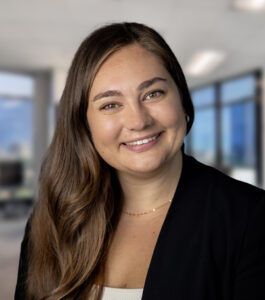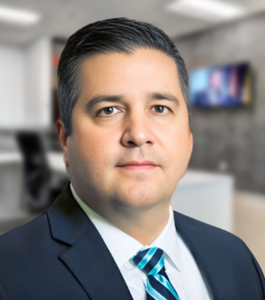May 2023 15th: Quarterly Benefit Statement - Deadline for participant-directed plans to supply participants with the quarterly benefit/disclosure statement including a statement of plan fees and expenses charged to individual plan accounts during the first quarter of 2023. June 2023 30th: EACA ADP/ACP Corrections - Deadline for processing corrective distributions for failed ADP/ACP...
BFSG Blog
Financial Resources & News
SECURE 2.0 Adds New Early Withdrawal Exceptions
The SECURE 2.0 Act, passed as part of an omnibus spending bill in December 2022, added new exceptions to the 10% federal income tax penalty for early withdrawals from tax-advantaged retirement accounts. The Act also expanded an existing exception that applies specifically to employer plans. These exceptions are often called 72(t) exceptions, because they are listed in Section 72(t) of the...
BFSG Listed Among Top DC Advisor Teams (2022)
The National Association of Plan Advisors (NAPA) released the list of its Top DC Advisor Teams for 2022 and Benefit Financial Services Group (BFSG Institutional Services) is pleased to announce we are among the nation’s leading retirement plan advisor firms. The National Association of Plan Advisors (NAPA) Top DC Advisor Teams listing focuses on teams, broadly defined as being in a single...
Potential Long-Term Benefits of Utilizing Backdoor Roth Conversions
By: Henry VanBuskirk, CFP®, Wealth Manager “Who can it be knocking at my door?” It’s the Men at Work and Women at Work in Congress(1) with new retirement legislation, SECURE Act 2.0. While this new legislation has many positive changes, many of those changes come with added complexity to how the Traditional IRA and Roth IRA contribution limits and catch-up contribution amounts are...
SECURE 2.0 is a GO!
In 2019, the Setting Every Community Up for Retirement Enhancement (SECURE) Act increased the Required Minimum Distribution (RMD) age for retirement plan participants from age 70 1/2 to 72. Additionally, it introduced opportunities for Long Term Part Time (LTPT) employees to make deferral contributions to retirement plans in situations where they have not yet met the plan’s eligibility...
Is it already time to complete another year-end data request?
When Plan Sponsors are asked to provide company and employee census information for a recent plan year, the details being collected affect the contributions that must be calculated and funded as well as which compliance tests the plan must satisfy. The same questions are asked year after year because changes in the company affect the plan a great deal. Information collected may include: Employee...
Stay tuned! Secure 2.0 Act of 2022 includes some action items that may produce beneficial changes in the future.
Within 18 months: Effectiveness of notice provided for eligible rollover distributions: A 402(f) notice, often referred to as a Special Tax Notice, must be provided to the recipient of a distribution that is eligible for rollover. The notice must contain required language regarding rollover options and the tax implications that may apply. The Government Accountability Office must issue a...
Upcoming Compliance Deadlines
February 2023 28th: IRS Form 1099-R Copy A – Deadline to submit 1099-R Copy A to the IRS for participants and beneficiaries who received a distribution or a deemed distribution during the prior plan year. March 2023 15th: ADP/ACP Corrections – Deadline for processing corrective distributions for failed ADP/ACP tests without a 10% excise tax for plans without an Eligible...
Markets in Review
Global financial markets saw a rebound early in the fourth quarter as inflation pressures eased and U.S dollar weakness helped spark a strong rally in November in both fixed income and equites. However, continued hawkish global central bank policy and rising global bond yields continued to be a headwind for the market, and as a result, the market began to wane towards the tail end of the...
Chad Noorani Selected as one of NAPA’s 2023 “Aces”
Congratulations Chad Noorani, QKA for being selected again to NAPA’s 2023 “Aces”: Top 100 Retirement Plan Advisors Under 40. Established in 2014, the list of "Aces" - our Top Young Retirement Plan Advisors - is drawn from nominations provided by NAPA Broker-Dealer/RIA Firm Partners, vetted by a blue-ribbon panel of senior advisor industry experts based on a combination of quantitative and...
Deadline for CARES Act and SECURE Act Amendments Extended
The original due date of the CARES Act and SECURE Act amendments for qualified plans, other than governmental plans, was the last day of the first plan year beginning on or after January 1, 2022, which means December 31, 2022, for calendar year plans. This has been extended to December 31, 2025, regardless of plan year end. However, the deadline for governmental plans (414(d) plans, 403(b) plans...
Upcoming Compliance Deadlines
December 2022 1st: Participant Notices – Annual notices due for Safe Harbor elections, Qualified Default Investment Arrangement (QDIA), and Automatic Contribution Arrangements (EACA or QACA). 30th: ADP/ACP Corrections - Deadline for a plan to make ADP/ACP corrective distributions and/or to deposit qualified nonelective contributions (QNEC) for the previous plan year. Discretionary...
Save or Toss? Proper Plan Record Storage a Must!
As the year comes to a close, you may wonder what plan records must be kept and what items can be tossed. Historical plan records may need to be produced for many reasons: an IRS audit, a DOL investigation or simply questions from participants about their benefits or accounts to name a few. The Internal Revenue Service (IRS) takes the position that plan records should be kept until all benefits...
New Plan Year Checklist
Each year, a great deal of attention is paid to the upcoming year end work: census gathering, compliance testing, 5500s, oh my! But the year-end also brings with it a host of items that may need attention before the year closes. Below are a few action items that may need to be considered. Changes were made for the current plan year or upcoming plan year that required an amendment. Example: As of...
Cost of Living Adjustments for 2023
Save even more for retirement in 2023 due to record breaking increases in limits. On October 21, 2022, the IRS announced the Cost of Living Adjustments (COLAs) affecting the dollar limitations for retirement plans for 2023. Retirement plan limits increased well over the 2022 limits, the largest increase in over 45 years. COLA increases are intended to allow participant contributions and benefits...
Our Services
Investment Management
Tailor portfolios to your needs and goals.
Retirement Planning
Investing and saving wisely is vital to success in retirement.
Financial Planning
Navigating the complexities of your financial affairs can be simplified.
Tax Management
Help to increase the amount you “take home”.
Estate Planning
Protect your loved ones and make sure your legacy endures.
Executive Compensation Analysis
Simplify the many options and decision points of executive compensation plans.
Education Planning
Confidently plan for your children’s future.
Charitable Giving
Give in a tax-smart, simple way.
*Please Note: Limitations. The scope of services to be provided depends upon the terms of the engagement, and the specific requests and needs of the client. BFSG does not serve as an attorney, accountant, or insurance agent. BFSG does not prepare legal documents or tax returns, nor does it sell insurance products. Please Also Note: Different types of investments involve varying degrees of risk. Therefore, it should not be assumed that future performance of any specific investment or investment strategy (including the investments and/or investment strategies recommended and/or undertaken by BFSG) or any financial planning or consulting services, will be profitable, equal any historical performance level(s), or prove successful.


































